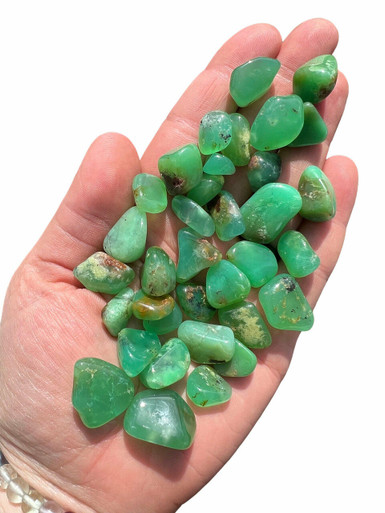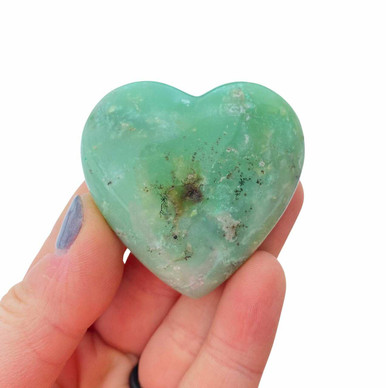Chrysoprase Meaning, Properties, and Uses
Chrysoprase Meaning, Metaphysical Properties, & Benefits
Chrysoprase is a stone of positivity and love.
It fosters a sense of forgiveness and compassion, even to those who may have hurt you.
Chrysoprase is a stone of emotional growth. It helps to attract new love and abundance.
It is a hopeful stone that offers personal insights and stimulates your creative side.
Chrysoprase helps you to grow into maturity of the mind and soul. It inspires new love and new beginnings, and gives you the positive outlook to face them with grace.
Chrysoprase Associations

Chrysoprase Zodiac
Chrysoprase is closely associated with the Zodiac Taurus.
Taurus is a sign that is ruled by Venus, the planet of love. This causes Taurus' to have an attraction to love and beauty making Chrysoprase the stone of positivity and love the perfect match!
Chrysoprase Chakra
Chrysoprase stimulates the Heart Chakra and opens your heart and your mind to new experiences and new relationships.
Chrysoprase Element
How to Use Chrysoprase
In Meditation
→ Set aside some time to take a moment to disconnect from the world around you and allow yourself to be present and connected.
→Take a few deep, slow breaths as you focus your mind upon the crystal you are holding.
→ While holding your piece of Chrysoprase , repeat the intention:
“I connect with those around me.”
In the Home
Place Chrysoprase in your bedroom or frequently used living spaces to invite feelings and energies of love and connection.
Chrysoprase can get wet for a short period of time, so feel free to cleanse your piece with a bit of water or however your heart desires.
Chrysoprase Products
Geology of Chrysoprase
This stone ranges in color from yellowish-green to green. Its green color is caused by traces of nickel. The more nickel in the specimen, the greener it will be. The color of some of these stones is unstable, however, so they cannot be placed in sunlight for long periods of time as well as exposed to heat. This will result in its color fading.
Chrysoprase occurs at shallow depths in areas where rocks with traces of nickel have been weathered.
It can be found in veins, as fracture fillings, and is often found with peridotite, dunite, and serpentinite.
In Australia where this crystal is currently most abundant, it is found as a vein and nodules with brown goethite and other iron oxides.













